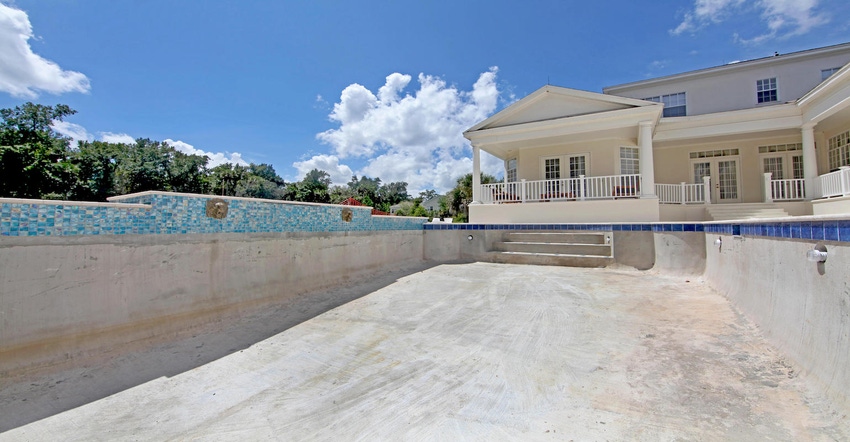Printing Concrete Pools Could Soon Be Reality
One industry leader theorizes that new uses of 3D concrete printers in construction could evolve to include printing in-ground swimming pools, warehouses, garages and more.

Are we approaching an era where you could print your own swimming pool using 3D printed concrete? We’re not there yet but one industry expert said we could be closer than you think.
On the cutting edge of the construction industry is the evolving technology around 3D printed concrete and Philip Lund-Nielsen, one of COBOD International’s co-founders and head of the Americas division for the company, is on the cutting edge of the evolving technology around 3D printed concrete. He shed some insight on the rapid development of this technology at this year’s World of Concrete show in Las Vegas.
COBOD International, a Danish company, considers itself a world leader in 3D construction printing technology.
“We wouldn’t be in this business if we didn’t think there was a future for 3D construction printing,” Lund-Nielsen said.
Lund-Nielsen said advancement in conventional construction had stagnated, which is something that happens to many industries.
“Now this happens in many industries, a new technology comes along, and it really takes the technology and the industry to a new level,” he said. “It’s the same when the smartphones came out.”
According to Lund-Nielsen, there are three main factors for the increased adoption of new technologies.
“Number one, improvements in technology,” he said. “So as with your iPhone that gets updated every year, it will become more reliable and faster.”
He said better material mixes are the equivalent of smartphone updates for the 3D-construction industry.
“Secondly, we also believe that we will see new features being implemented,” he said. “We believe that many more tools can be added to these printers, such as pouring heads that can do pouring insulation.”
Lund-Nielsen said printing at a larger scale is also a new feature on the way, and currently COBOD has a printer that can go up to three stories in height. He said printers will only grow in scale and capabilities in the future.
“Lastly, we see a lot of new use cases that can be developed here,” he said. “For many of our customers, we see residential housing being the area that they address. However, we also see a major potential in commercial areas.”
Lund-Nielsen said new uses of 3D-construction printers could involve the printing of warehouses, garages, logistical centers, in-ground swimming pools, and basements.
“All of these areas have yet to be developed, and that’s completely understandable because you want to nail down the basics,” he said.
About the Author(s)
You May Also Like




